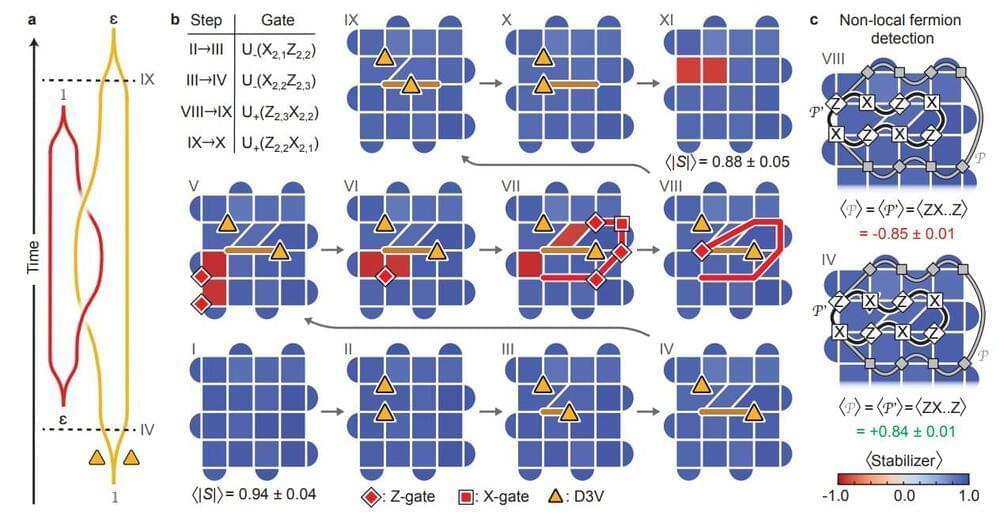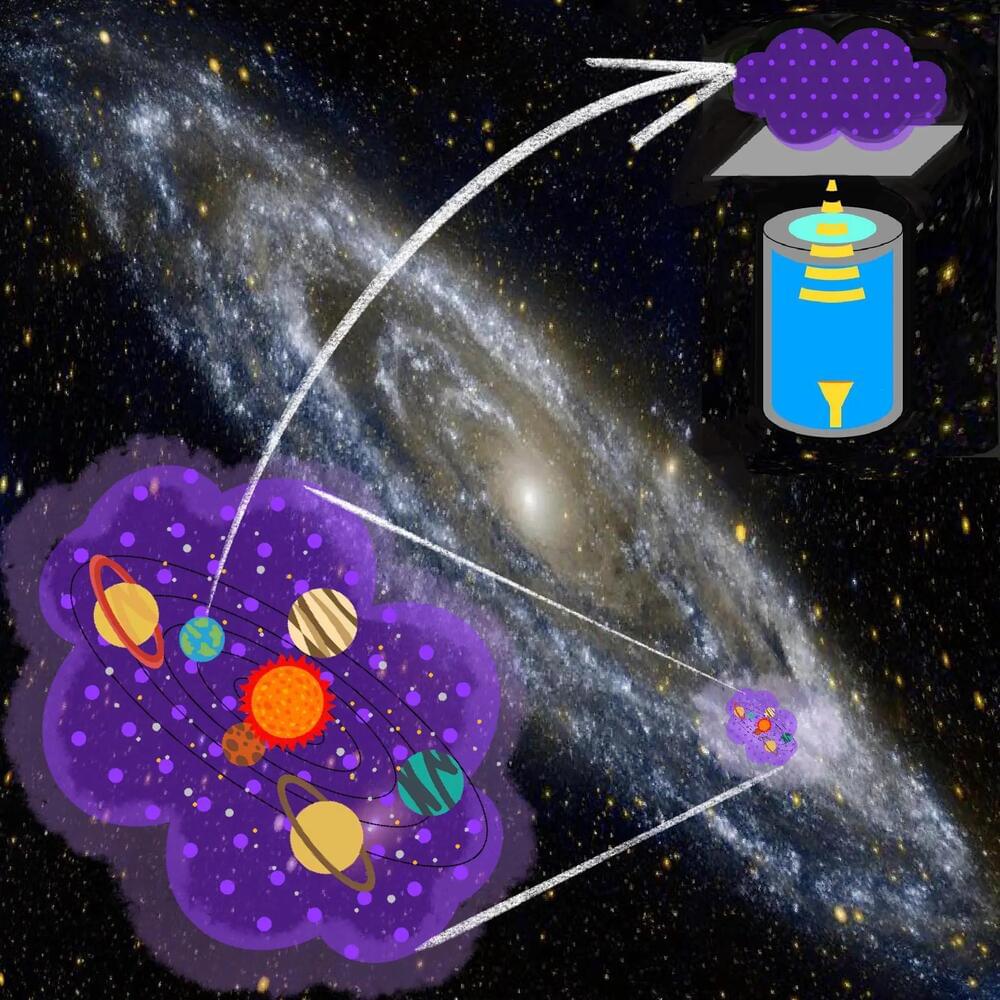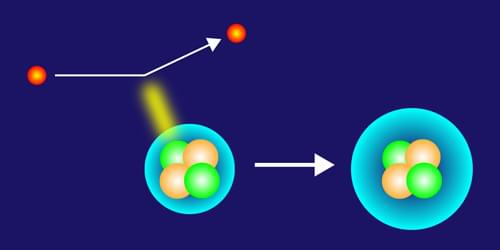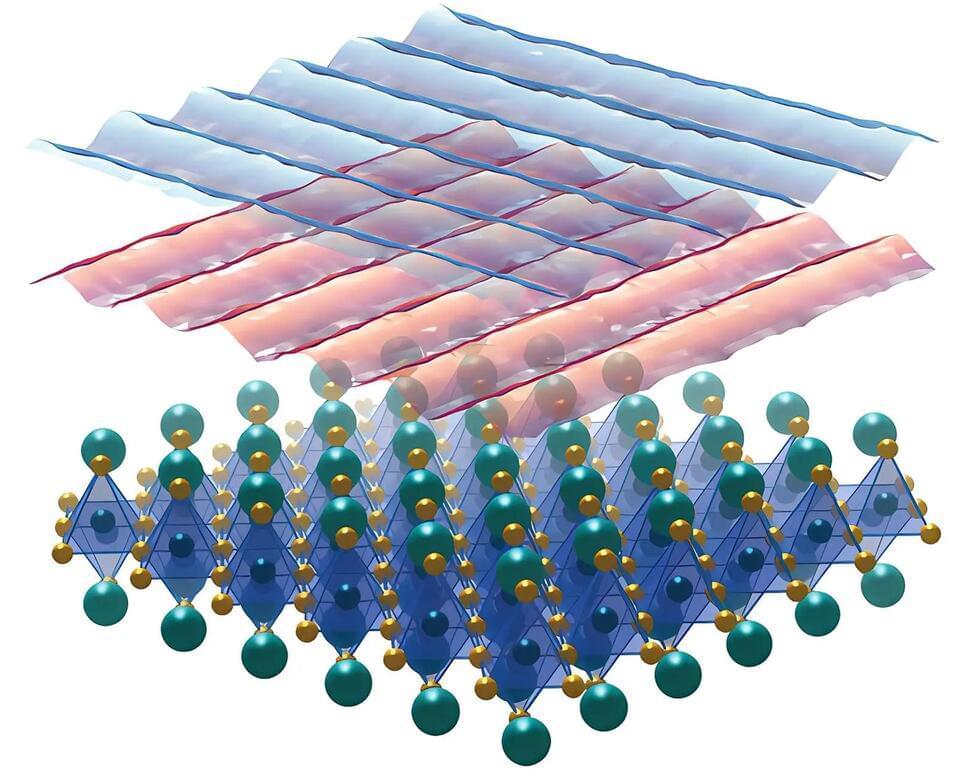In the math of particle physics, every calculation should result in infinity. Physicists get around this by just ignoring certain parts of the equations — an approach that provides approximate answers. But by using the techniques known as “resurgence,” researchers hope to end the infinities and end up with perfectly precise predictions.
Category: particle physics – Page 356


Physicists take step toward fault-tolerant quantum computing
Some classical computers have error correction built into their memories based on bits; quantum computers, to be workable in the future, will need error correction mechanisms, too, based on the vastly more sensitive qubits.
Cornell researchers have recently taken a step toward fault-tolerant quantum computing: they constructed a simple model containing exotic particles called non-Abelian anyons, compact and practical enough to run on modern quantum hardware. Realizing these particles, which can only exist in two dimensions, is a move towards implementing it in the real world.
Thanks to some creative thinking, Yuri Lensky, a former Bethe/Wilkins/Kavli Institute at Cornell (KIC) postdoctoral fellow in physics in the College of Arts and Sciences (A&S), collaborating with Eun-Ah Kim, professor of physics (A&S), came up with a simple “recipe” that could be used for robustly computing with non-Abelian anyons, including specific instructions for executing the effect experimentally on devices available today.

Dark Photon Dark Matter Breakthrough: Trailblazing Cryogenic Detection Techniques
Scientists at Kyoto University have developed an experimental method to examine ultra-light dark matter by observing its gravitational effects on visible matter. Using millimeter-wave sensing in cryogenic conditions, the team achieved experimental parameters for unexplored mass ranges of dark photon.
A photon is a particle of light. It is the basic unit of light and other electromagnetic radiation, and is responsible for the electromagnetic force, one of the four fundamental forces of nature. Photons have no mass, but they do have energy and momentum. They travel at the speed of light in a vacuum, and can have different wavelengths, which correspond to different colors of light. Photons can also have different energies, which correspond to different frequencies of light.

Physicists Create Photonic Time Crystal That Amplifies Light
A team of researchers designed a two-dimensional photonic time crystal that they say could have applications in technologies like transmitters and lasers.
Despite their name, photonic time crystals have little in common with time crystals, a phase of matter first proposed in 2012 and observed several years later. The fundamental commonality is that both crystals have structural patterns over time, but time crystals are quantum materials—the atoms are suspended in quantum states—while photonic time crystals are artificial materials not found in nature and they are not necessarily suspended in quantum states.

A macroscopic amount of matter has been put in a quantum superposition
Researchers have put a sapphire crystal containing quadrillions of atoms into a superposition of quantum states, bringing quantum effects into the macroscopic world.
By Leah Crane

A New Kind of Time Crystal Has Been Created That Does Interesting Things to Light
Scientists are still getting to grips with the ins and outs of strange materials known as time crystals; structures that buzz with movement for eternity. Now a new variety might help deepen our understanding of the perplexing state of matter.
Just as regular crystals are atoms and molecules that repeat over a volume of space, time crystals are collections of particles that tick-tock in patterns over a duration of time in ways that initially seem to defy science.
Theorized in 2012 before being observed in the lab for the first time just four years later, researchers have been busy tinkering with the structures to probe deeper foundations of particle physics and uncover potential applications.


Probing the Helium Nucleus beyond the Ground State
A new electron-scattering experiment challenges our understanding of the first excited state of the helium nucleus.
A helium nucleus, also known as an particle, consists of two protons and two neutrons and is one of the most extensively studied atomic nuclei. Given the small number of constituents, the particle can be accurately described by first principles calculations. And yet, the excited states of the particle remain a bit of a mystery, as evidenced by a disagreement surrounding the excitation from the ground state 01+ to the first excited state 02+ [1]. Theoretical predictions for this transition do not match measurements, but the experimental uncertainties have been too large for implications to be drawn. Now, the A1 Collaboration at Mainz Microtron (MAMI) in Germany has remeasured this transition via inelastic electron scattering [2]. The new data significantly improves the precision compared to previous measurements and confirms the initial discrepancy.

The Superconductive Connection: Crystal Stripes and Quantum Electron Behavior
Hidden stripes in a crystal could help scientists understand the mysterious behavior of electrons in certain quantum systems, including high-temperature superconductors, an unexpected discovery by RIKEN physicists suggests.
The electrons in most materials interact with each other very weakly. But physicists often observe interesting properties in materials in which electrons strongly interact with each other. In these materials, the electrons often collectively behave as particles, giving rise to ‘quasiparticles’.
“A crystal can be thought of like an alternative universe with different laws of physics that allow different fundamental particles to live there,” says Christopher Butler of the RIKEN Center for Emergent Matter Science.